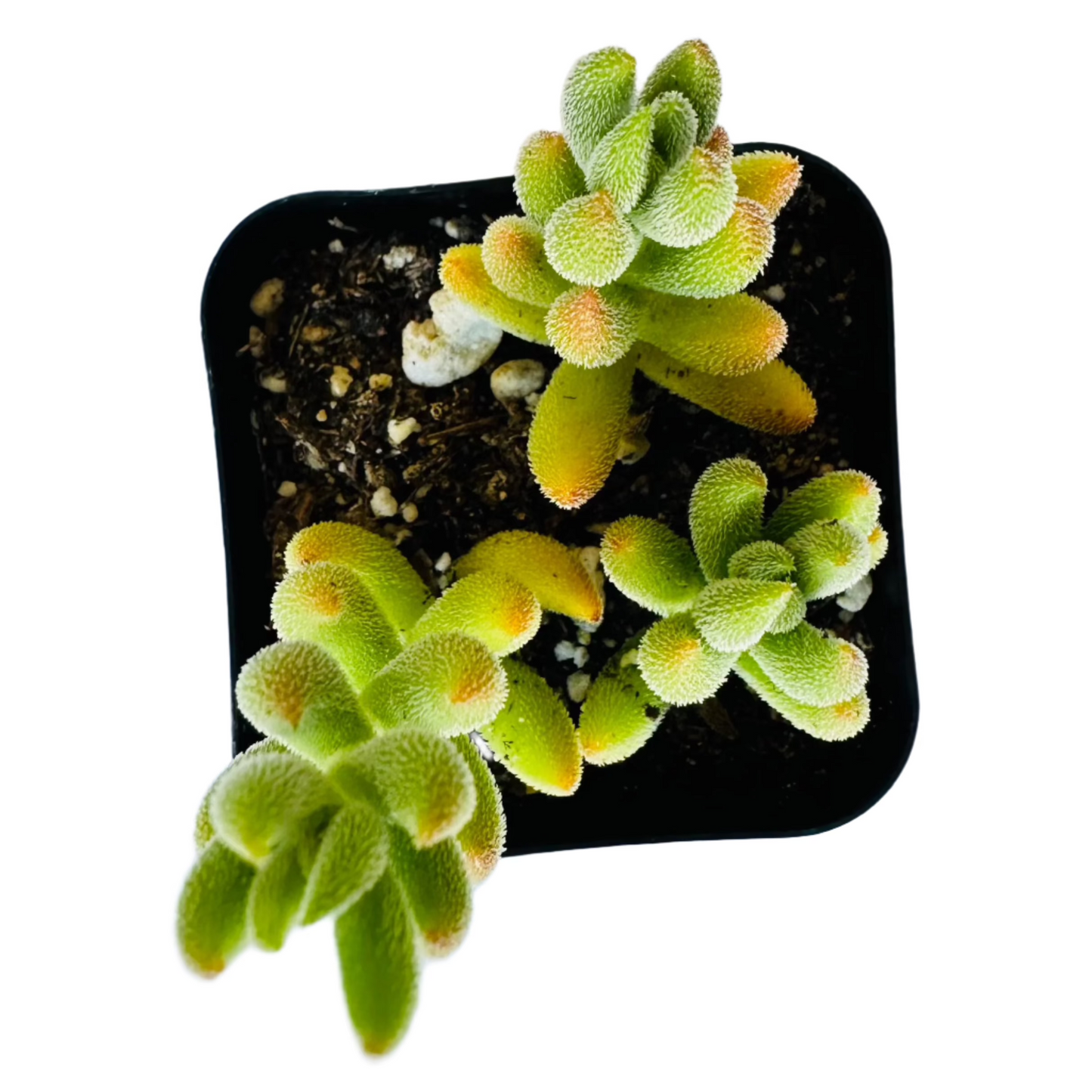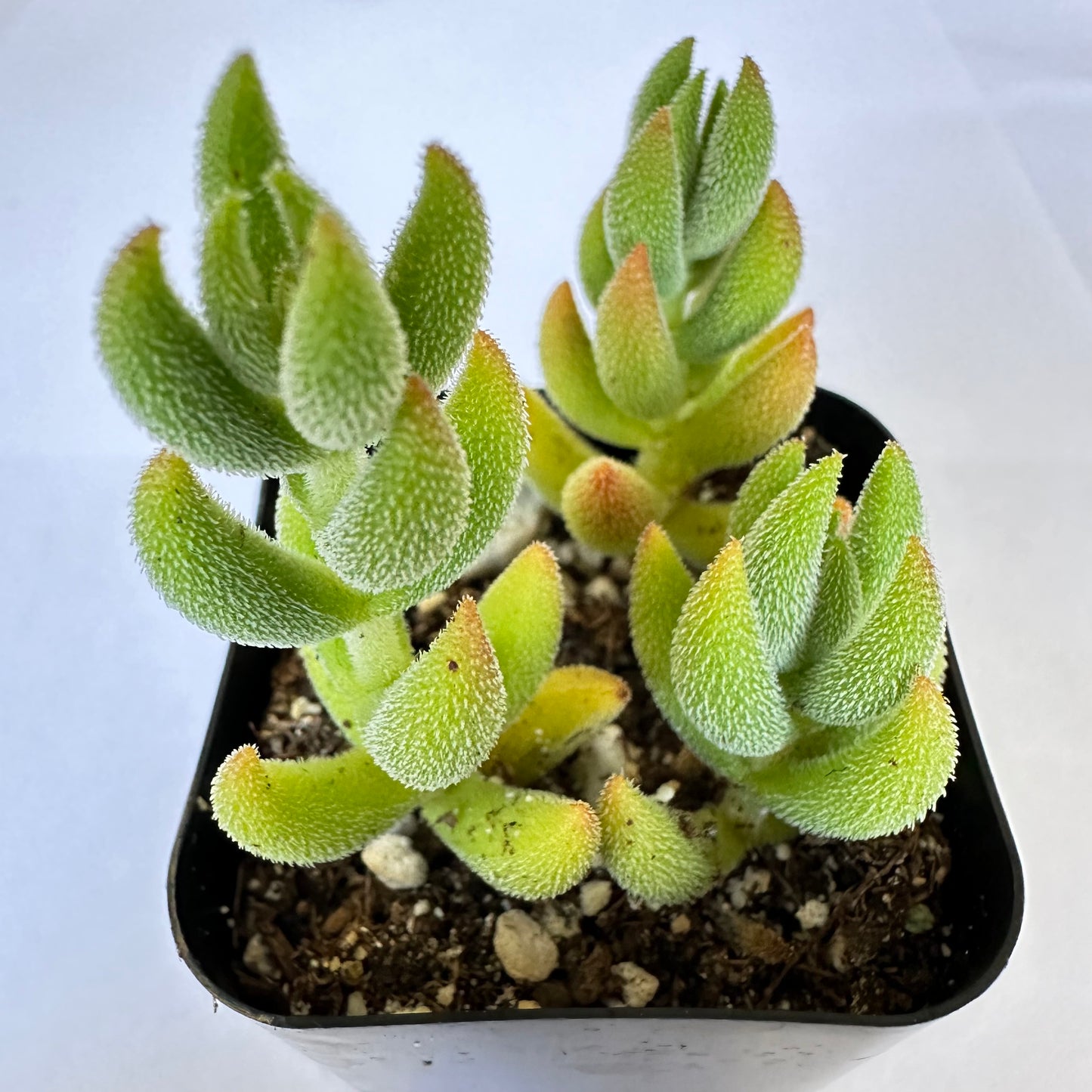SEAH
Crassula mesembryanthemoides
Crassula mesembryanthemoides
No se pudo cargar la disponibilidad de retiro
Morphological Characteristics
Crassula mesembryanthemoides is a member of the Crassulaceae family, known for its distinctive, succulent features and frosted appearance. This plant typically has cylindrical leaves that are densely covered with fine, white hairs, giving it a silvery or frosted look. The leaves are arranged in a rosette or stacked pattern along the stems. The leaves are generally green, but the white hairs help in water retention and provide some protection against intense sunlight. During the growing season, Crassula mesembryanthemoides can produce small, star-shaped white or pale pink flowers on short inflorescences.
Growth Habits
Crassula mesembryanthemoides is a slow-growing succulent that prefers a stable environment. It thrives in mild climates and does not tolerate extreme cold or heat well, making it ideal for growing indoors in temperate regions. In its natural habitat, it often grows in rocky or sandy soils which provide excellent drainage.
Maintenance Points
• Lighting: This plant prefers bright, indirect sunlight. It can tolerate some direct sunlight, especially in the morning or late afternoon, which can enhance the silvery appearance of the leaves. Too little light may lead to elongated, weak growth.
• Watering: As a succulent, Crassula mesembryanthemoides requires minimal watering. The soil should be allowed to dry out completely between waterings. Over-watering or poor drainage can lead to root rot.
• Soil: A well-draining succulent or cactus mix is ideal, potentially enhanced with additional perlite or sand to improve drainage.
• Temperature: It does best in temperatures between 15-25°C (59-77°F). Avoid exposure to temperatures below 10°C (50°F) to prevent cold damage.
• Fertilization: Feed lightly with a balanced, water-soluble fertilizer during the growing season; however, too much fertilizer can harm the plant, so it should be done sparingly.
Reproduction Method
Crassula mesembryanthemoides can be propagated primarily through leaf cuttings and stem cuttings.
1. Leaf Cuttings: Gently twist a healthy leaf from the stem. Allow the leaf cutting to dry for a few days until the cut end forms a callus. Place the callused cutting on top of well-draining soil and water sparingly until roots appear.
2. Stem Cuttings: Cut a healthy stem section from the parent plant and let it dry for a few days until the cut end forms a callus. Plant the callused end in well-draining soil and water sparingly until roots develop.
Compartir




